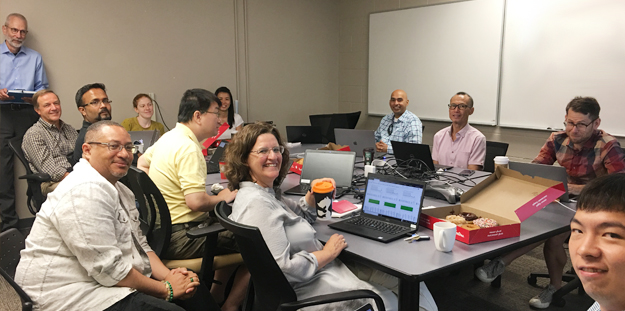It’s one of the most intense days of the year for U of T’s Faculty of Arts & Science students – when thousands of users log in to the student information system to enrol. But this year, students could breathe a sigh of relief as the system, called ACORN, expertly handled over 53,000 transactions in record time.
In the past, ACORN struggled to deal with a high volume of concurrent users, but a three-year project to modernize the system with a new code base and infrastructure has paid off – on August 2, it took students an average of seven minutes versus nine to complete their enrolment.
The enrolment day and the project, known as the NGSIS Platform Modernization Project, involved Enterprise Applications and Solutions Integration (EASI), Enterprise Infrastructure Solutions (EIS), and Information Security at U of T’s Information Technology Services.
“This peak enrolment period is the time of year that really puts our system to the test,” says Frank Boshoff, senior manager of technical solutions and architecture with EASI. “This year was the smoothest enrolment to date. The new platform has given us the flexibility to deliver the services that a university of our stature requires.”
To prepare for the big day, the team increased monitoring, analytics and performance testing on the system.
“We had at least three months of preparation and we rolled out improvements to ensure the best user experience possible,” says Haroon Rafique, manager of development operations with EASI. “Leading up to the big day all indications showed that the system was performing well, but we were still waiting to see how it handled such a large volume. There were only slight delays during login and almost negligible performance degradation.”
Last year it took 24 seconds for an average page to load and this year only took 5.8 seconds, allowing students to complete their enrolment more quickly.
After the success of this enrolment period, the team now plans to explore the opportunity to compress the enrolment time period, allowing administrators more time to react to classes that are oversubscribed.
“It was rewarding to see how all of our work has paid off and it will be even more rewarding to see where future improvements take us,” says Laurel Williams, Information Technology Analyst with EASI.
From a broader perspective, the new platform will also offer an opportunity for future integration.
“The results from this day have shown that improving the platform was an investment well worth making,” says Boshoff. “We’re excited about the ability to integrate this platform with other systems and support more responsive, convenient outcomes for constituents.”

